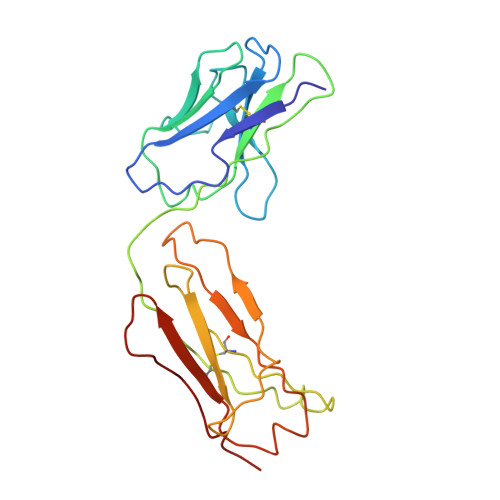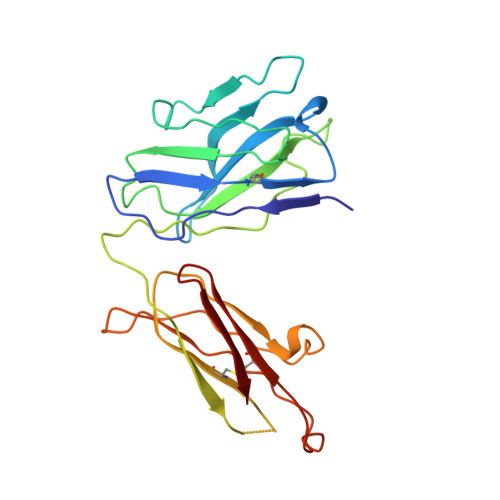Crystal structures of a rat anti-CD52 (CAMPATH-1) therapeutic antibody Fab fragment and its humanized counterpart.
Cheetham, G.M., Hale, G., Waldmann, H., Bloomer, A.C.(1998) J Mol Biology 284: 85-99
- PubMed: 9811544
- DOI: https://doi.org/10.1006/jmbi.1998.2157
- Primary Citation of Related Structures:
1BEY, 1BFO - PubMed Abstract:
The CAMPATH-1 family of antibodies are able systematically to lyse human lymphocytes with human complement by targeting the small cell-surface glycoprotein CD52, commonly called the CAMPATH-1 antigen. These antibodies have been used clinically for several years, providing therapy for patients with a variety of immunologically mediated diseases. We report here the first X-ray crystallographic analyses of a Fab fragment from a rat antibody, the original therapeutic monoclonal CAMPATH-1G and its humanized counterpart CAMPATH-1H, into which the six complementarity-determining regions of the rat antibody have been introduced. These structures have been refined at 2.6 A and 3.25 A resolution, respectively. The VL domains of adjacent molecules of CAMPATH-1H form a symmetric dimer within the crystals with an inter-molecular extended beta-sheet as seen in light chain dimers of the kappa class. Crystals of CAMPATH-1G have translational pseudo-symmetry. Within the antibody-combining sites, which are dominated by the protrusion of LysH52b and LysH53 from hypervariable loop H2, the charge distribution and overall integrity are highly conserved, but large changes in the position of loop H1 are observed and an altered conformation of loop H2. The major determinants of this are framework residues H71 and H24, whose identity differs in these two antibodies. These structures provide a detailed structural insight into the transplantation of an intact antibody-combining site between a rodent and a human framework, and provide an increased understanding of the specificity and antigen affinity of this pair of CAMPATH-1 antibodies for CD52. This study forms the structural basis for future modification and design of more effective antibodies to this important antigen.
- MRC Laboratory of Molecular Biology, Hills Road, Cambridge, CB2 2QH, UK.
Organizational Affiliation:

















